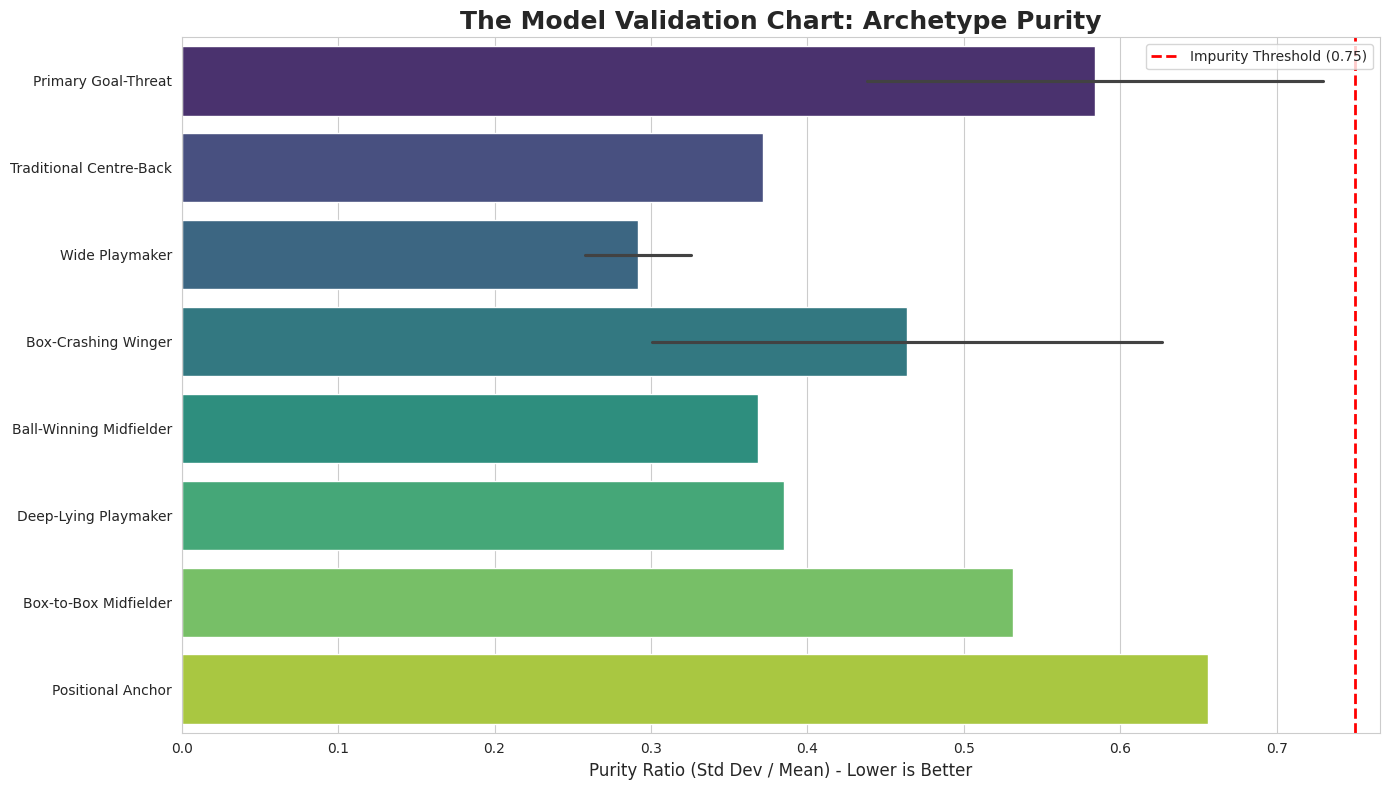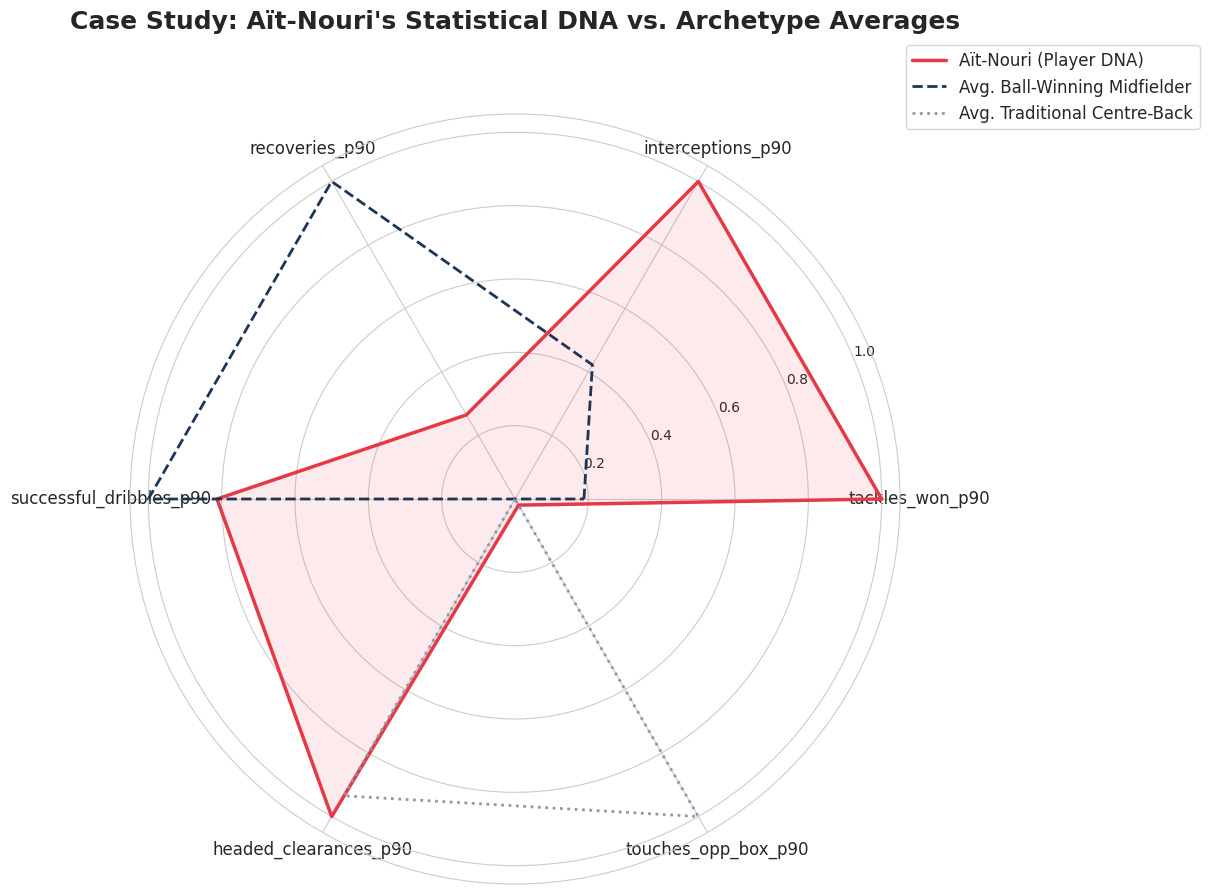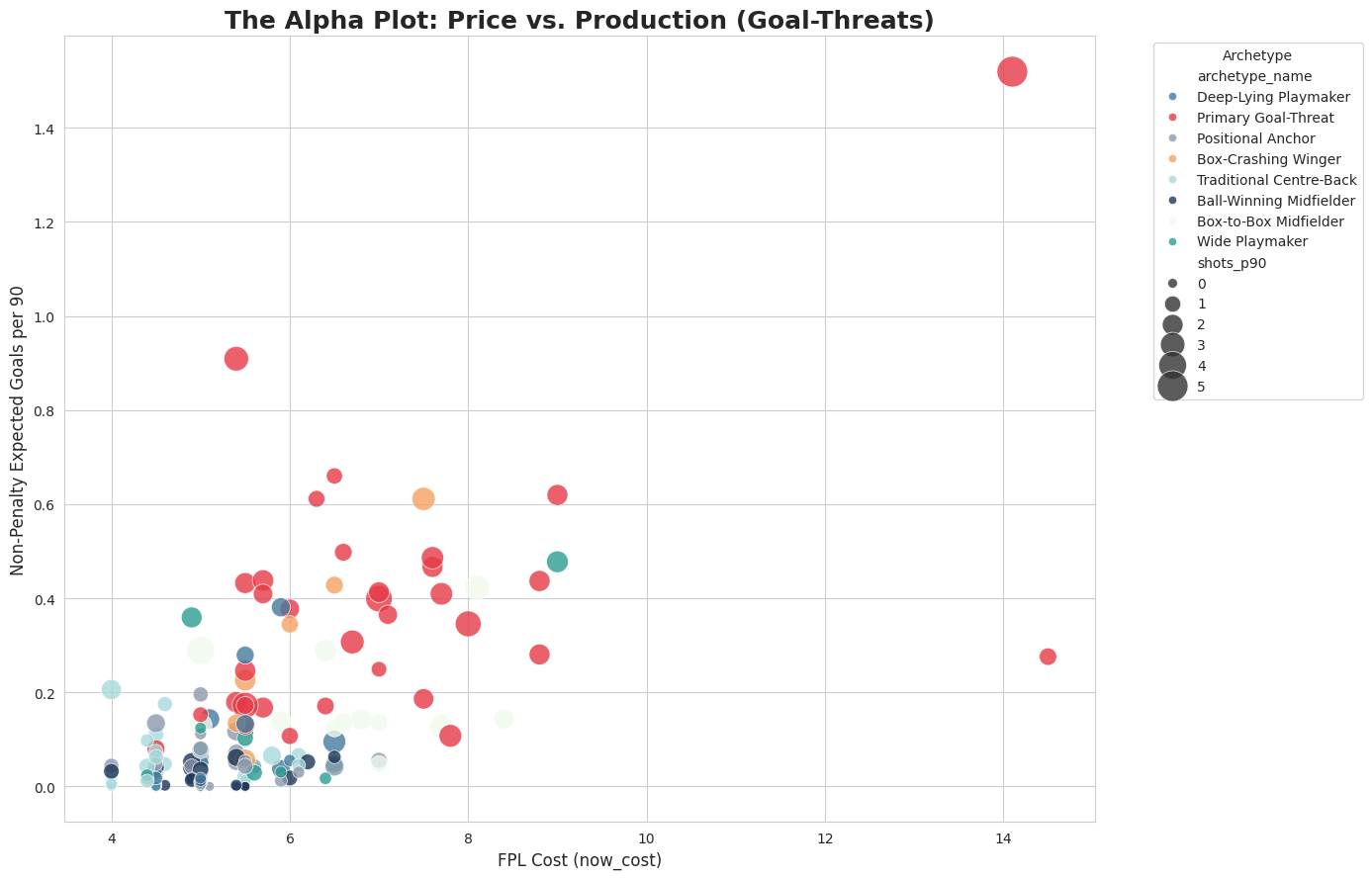GW 4 - Beyond Positions: A Data-Driven Guide to True FPL Player Roles
How we used cluster analysis to define the 8 functional archetypes that provide a quantifiable FPL edge
The Fantasy Premier League forces us to categorize hundreds of players into four rigid buckets: Goalkeeper, Defender, Midfielder, and Forward. This is a necessary simplification for the game, but it is also a tactical lie. The modern footballer’s role is not defined by their starting position on a team sheet, but by their specific function within a complex system. Relying on FPL’s labels is like navigating a city with a map from the 19th century; the key landmarks may be there, but you’re missing the intricate network of roads that defines how the city actually works.
Our objective was to create a modern map. We have moved beyond FPL positions to identify the eight true functional archetypes of the Premier League outfielder. This was not a subjective exercise. It was a rigorous, data-driven process designed to provide a clear, actionable edge. This is our methodology and what we found.
The Methodology: How We Built the Map
Credibility requires transparency. Our analysis is not a black box. Here is the exact process we used to define the eight player archetypes, built on a foundation of every outfielder who has played over 200 minutes this season.
The Algorithm: We employed a K-Means clustering algorithm, an industry-standard machine learning technique, to group players into statistically similar clusters based on their on-pitch performance.
Data Normalization: Before analysis, all data was scaled using a Standard Scaler. This ensures that metrics with large ranges (like final third passes) do not disproportionately influence the model over metrics with smaller ranges (like npxG), creating a true, balanced comparison.
The 13 Core Metrics: Our model was not built on simple goals and assists. We used 13 granular per-90-minute statistics to capture a player’s complete functional DNA:
Goal Threat: npxg_p90, shots_p90, touches_opp_box_p90 (Measures pure, repeatable scoring potential and penalty box presence).
Playmaking: xa_p90, chances_created_p90, final_third_passes_p90, accurate_crosses_p90 (Measures creative output and ability to progress the ball).
Ball Carrying: successful_dribbles_p90 (Measures ability to beat a player and disrupt defensive structures).
Defensive Actions: tackles_won_p90, interceptions_p90, recoveries_p90, headed_clearances_p90 (Measures all facets of defensive contribution).
Defensive Vulnerability: dribbled_past_p90 (Measures 1v1 defensive weakness).
Validation: We did not simply trust the output. We validated it. A Silhouette Score confirmed that eight distinct clusters (K=8) was the most statistically coherent solution. Furthermore, we ran a Purity Report, ensuring that the variance within each archetype was low. As the chart below shows, every single one of our eight archetypes sits comfortably below the 0.75 impurity threshold, confirming they are tight, well-defined player roles, not statistical dumping grounds.
The 8 True Archetypes of FPL
This process revealed eight distinct roles. The radar charts below show the statistical signature of each archetype—its unique fingerprint based on the key metrics that define it.
Primary Goal-Threat: Lives for shots and penalty box touches. Defined by elite npxG and little else.
Box-to-Box Midfielder: A true all-rounder. High involvement in creating chances, dribbling, and penalty box entries, with some defensive output.
Box-Crashing Winger: A specialist in destabilizing defences. Defined by high successful dribbles and penalty box touches, often with significant goal threat.
Wide Playmaker: The creator from the flanks. Defined by elite accurate crosses and chance creation.
Deep-Lying Playmaker: The tempo-setter. Controls the game from deep with a high volume of final third passes.
Ball-Winning Midfielder: A defensive engine. Defined by elite numbers for tackles won, interceptions, and recoveries.
Positional Anchor: A disciplined, functional role-player. Characterized by lower involvement in attack but provides defensive stability without being a pure ball-winner.
Traditional Centre-Back: The defensive specialist. Defined almost exclusively by elite headed clearances and defensive actions inside their own third.
Actionable Insight 1: The 'Out of Position' Goldmine
The single greatest advantage this model provides is identifying players the FPL game has miscategorized. The prime example is Rayan Aït-Nouri.
FPL lists him as a Defender. Our model, based on his raw statistical output, unequivocally classifies him as a Ball-Winning Midfielder. The visual evidence is undeniable. When you overlay his personal statistical radar chart against the average profiles of a Defender and a Ball-Winning Midfielder, he is a near-perfect match for the latter. His profile is defined by tackles and interceptions, not the headed clearances of a Traditional Centre-Back.
This is a profound market inefficiency. An FPL manager gets to roster a player who produces the defensive action points of an elite midfielder (1.77 tackles won, 2.22 interceptions p90) while also being eligible for the 4-point clean sheet bonus that a true midfielder is denied. He offers two distinct pathways to points, a hybrid asset that the game's rigid structure isn't built to properly value.
Actionable Insight 2: Finding True Value
Identifying a player's true role is the first step. The second is mapping that role against their FPL cost to find value. The "Alpha Plot" does exactly this for our most important archetype, the Primary Goal-Threat.
This chart plots every Primary Goal-Threat's FPL cost against their actual goal production (npxG per 90). The top-right is the domain of the premium elite: Erling Haaland (£14.1m) is in a league of his own. The true alpha, however, lies in the top-left quadrant: high production at a low cost. Players like Beto (£5.4m), who is posting an npxG of 0.91, offer nearly 60% of Haaland's goal threat for just 38% of the price. This visualizes the value frontier, allowing for surgically precise budget allocation.
The Archetype Exemplars
Forget simple leaderboards. To truly understand these roles, you need to know their purest practitioners. The model identifies the players who are the most quintessential examples of their archetype—the players closest to the statistical center of their cluster.
Looking for a quintessential Primary Goal-Threat? The model points to Erling Haaland. His radar signature is a perfect spike in the three goal-threat metrics, with almost no output elsewhere. He is a pure, system-enabled finisher. This means his FPL value is almost entirely dependent on his team's ability to generate chances for him; if City's attack stalls, his output has no secondary path.
Need the purest example of a Ball-Winning Midfielder? The data highlights Moisés Caicedo. His 1.00 tackles won and 3.00 interceptions per 90, combined with his high volume of recoveries, make him the platonic ideal of a midfield destroyer. This makes him a prime candidate for bonus points in low-scoring games, but his value is capped by his near-zero goal threat.
Who is the definitive Wide Playmaker? The model selects Kieran Trippier. While others may have more of a single stat, Trippier's combination of elite chance creation (2.27 p90), accurate crosses (2.56 p90), and final third passes (12.21 p90) makes him the most complete and multi-faceted creator from wide areas. This diverse output makes him less volatile than specialist players; he can return points via assists, clean sheets, and bonus points, providing a stable floor.
Conclusion: A New Map for a New Game
The FPL landscape is competitive. An edge can no longer be found by looking at the same simple stats and positions as everyone else. By moving beyond positions to analyze function, we can identify mispriced assets, find value that the market has missed, and build teams based on a player's true role, not the label the game assigns them. This is the new map. Use it to find your way.





